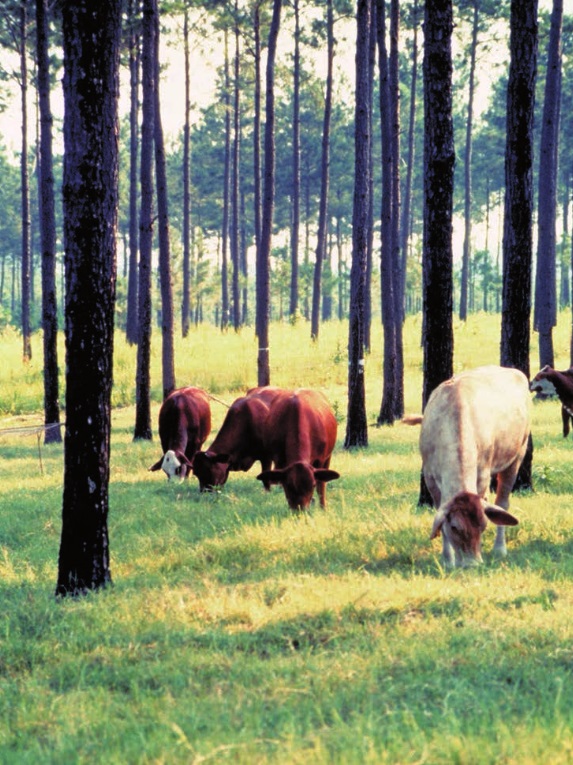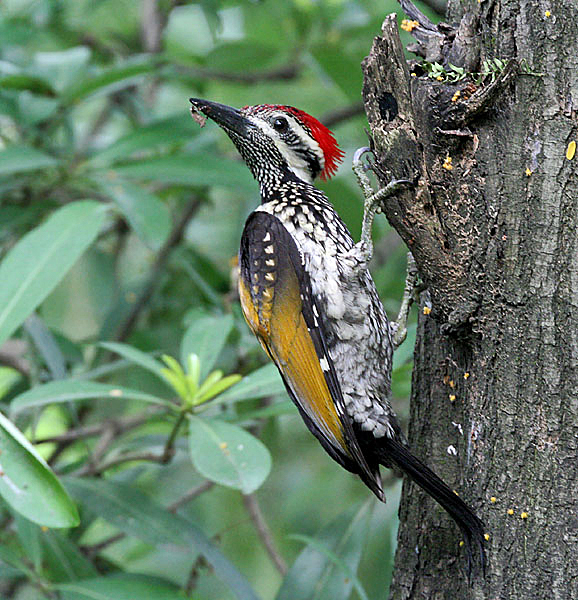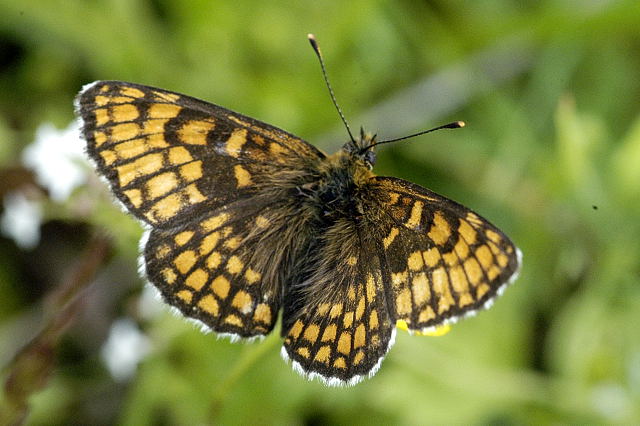|
East Blean Woods
East Blean Woods is a biological Site of Special Scientific Interest south of Herne Bay in Kent. It is also a National Nature Reserve a Special Area of Conservation and a Nature Conservation Review site. An area of is managed by the Kent Wildlife Trust. The reserve is ancient semi-natural woodland situated on poorly drained London clay, with a small area of gravelly soil in the south. The underlying clay results in much surface water and mud in winter and wet summers. The soil is mostly fairly acid, as shown by the carpets of bluebells and patches of heather (''Calluna vulgaris''), but more alkaline elsewhere, with characteristic species such as spurge-laurel (''Daphne laureola''), sanicle (''Sanicula europaea'') and common spotted orchid (''Dactylorhiza fuchsii''). The wood has been heavily managed in the past as wood pasture and as a source for sweet chestnut (''Castanea sativa'') coppice. When conditions are open, after the coppice is cut, much of the ground is colonised b ... [...More Info...] [...Related Items...] OR: [Wikipedia] [Google] [Baidu] |
Site Of Special Scientific Interest
A Site of Special Scientific Interest (SSSI) in Great Britain or an Area of Special Scientific Interest (ASSI) in the Isle of Man and Northern Ireland is a conservation designation denoting a protected area in the United Kingdom and Isle of Man. SSSI/ASSIs are the basic building block of site-based nature conservation legislation and most other legal nature/geological conservation designations in the United Kingdom are based upon them, including national nature reserves, Ramsar sites, Special Protection Areas, and Special Areas of Conservation. The acronym "SSSI" is often pronounced "triple-S I". Selection and conservation Sites notified for their biological interest are known as Biological SSSIs (or ASSIs), and those notified for geological or physiographic interest are Geological SSSIs (or ASSIs). Sites may be divided into management units, with some areas including units that are noted for both biological and geological interest. Biological Biological SSSI/A ... [...More Info...] [...Related Items...] OR: [Wikipedia] [Google] [Baidu] |
Wood Pasture
Silvopasture (''silva'' is forest in Latin) is the practice of integrating trees, forage, and the grazing of domesticated animals in a mutually beneficial way. It utilizes the principles of Managed intensive rotational grazing, managed grazing, and it is one of several distinct forms of agroforestry. Properly managed silvopasture (grazed woodland) can increase overall productivity and long-term income due to the simultaneous production of tree crops, forage, and livestock, and can provide environmental benefits such as carbon sequestration. Silvopasture is one of the oldest known forms of agriculture, and has been practiced in many parts of the world for centuries. Silvopasture is not the same as Overgrazing, unmanaged grazing in woodlands, which has many known negative environmental consequences. Benefits Open pasture systems are a result of mass deforestation, generating the loss of carbon storage, decreasing water availability, and increasing soil nutrients to a point that is ... [...More Info...] [...Related Items...] OR: [Wikipedia] [Google] [Baidu] |
Nature Conservation Review Sites
Nature, in the broadest sense, is the physical world or universe. "Nature" can refer to the phenomena of the physical world, and also to life in general. The study of nature is a large, if not the only, part of science. Although humans are part of nature, human activity is often understood as a separate category from other natural phenomena. The word ''nature'' is borrowed from the Old French ''nature'' and is derived from the Latin word ''natura'', or "essential qualities, innate disposition", and in ancient times, literally meant "birth". In ancient philosophy, ''natura'' is mostly used as the Latin translation of the Greek word ''physis'' (φύσις), which originally related to the intrinsic characteristics of plants, animals, and other features of the world to develop of their own accord. The concept of nature as a whole, the physical universe, is one of several expansions of the original notion; it began with certain core applications of the word φύσις by pre-Socr ... [...More Info...] [...Related Items...] OR: [Wikipedia] [Google] [Baidu] |
National Nature Reserves In England
National nature reserves in England are designated by Natural England as key places for wildlife and natural features in England. They were established to protect the most significant areas of habitat and of geological formations. NNRs are managed on behalf of the nation, many by Natural England itself, but also by non-governmental organisations, including the members of The Wildlife Trusts partnership, the National Trust, and the Royal Society for the Protection of Birds. There are 229 NNRs in England covering . Often they contain rare species or nationally important species of plants, insects, butterflies, birds, mammals, etc. Spotlight NNRs Natural England has selected 35 as ''spotlight reserves'': Spotlight Reserves # |
Special Areas Of Conservation In England
Special or specials may refer to: Policing * Specials, Ulster Special Constabulary, the Northern Ireland police force * Specials, Special Constable, an auxiliary, volunteer, or temporary; police worker or police officer Literature * ''Specials'' (novel), a novel by Scott Westerfeld * ''Specials'', the comic book heroes, see ''Rising Stars'' (comic) Film and television * Special (lighting), a stage light that is used for a single, specific purpose * ''Special'' (film), a 2006 scifi dramedy * ''The Specials'' (2000 film), a comedy film about a group of superheroes * ''The Specials'' (2019 film), a film by Olivier Nakache and Éric Toledano * Television special, television programming that temporarily replaces scheduled programming * ''Special'' (TV series), a 2019 Netflix Original TV series * ''Specials'' (TV series), a 1991 TV series about British Special Constables * ''The Specials'' (TV series), an internet documentary series about 5 friends with learning disabilitie ... [...More Info...] [...Related Items...] OR: [Wikipedia] [Google] [Baidu] |
Eurasian Treecreeper
The Eurasian treecreeper or common treecreeper (''Certhia familiaris'') is a small passerine bird also known in the British Isles, where it is the only living member of its genus, simply as treecreeper. It is similar to other treecreepers, and has a curved bill, patterned brown upperparts, whitish underparts, and long stiff tail feathers which help it creep up tree trunks. It can be most easily distinguished from the similar short-toed treecreeper, which shares much of its European range, by its different song. The Eurasian treecreeper has nine or more subspecies which breed in different parts of its range in the Palearctic. This species is found in woodlands of all kinds, but where it overlaps with the short-toed treecreeper in western Europe it is more likely to be found in coniferous forests or at higher altitudes. It nests in tree crevices or behind bark flakes, and favours introduced giant sequoia as nest sites where they are available. The female typically lays five or six p ... [...More Info...] [...Related Items...] OR: [Wikipedia] [Google] [Baidu] |
Eurasian Nuthatch
The Eurasian nuthatch or wood nuthatch (''Sitta europaea'') is a small passerine bird found throughout the Palearctic and in Europe. Like other nuthatches, it is a short-tailed bird with a long bill, blue-gray upperparts and a black eye-stripe. It is a vocal bird with a repeated loud ''dwip'' call. There are more than 20 subspecies in three main groups; birds in the west of the range have orange-buff underparts and a white throat, those in Russia have whitish underparts, and those in the east have a similar appearance to European birds, but lack the white throat. Its preferred habitat is mature deciduous or mixed woodland with large, old trees, preferably oak. Pairs hold permanent territories, and nest in tree holes, usually old woodpecker nests, but sometimes natural cavities. If the entrance to the hole is too large, the female plasters it with mud to reduce its size, and often coats the inside of the cavity too. The 6–9 red-speckled white eggs are laid on a deep base of pin ... [...More Info...] [...Related Items...] OR: [Wikipedia] [Google] [Baidu] |
Woodpecker
Woodpeckers are part of the bird family Picidae, which also includes the piculets, wrynecks, and sapsuckers. Members of this family are found worldwide, except for Australia, New Guinea, New Zealand, Madagascar, and the extreme polar regions. Most species live in forests or woodland habitats, although a few species are known that live in treeless areas, such as rocky hillsides and deserts, and the Gila woodpecker specialises in exploiting cacti. Members of this family are chiefly known for their characteristic behaviour. They mostly forage for insect prey on the trunks and branches of trees, and often communicate by drumming with their beaks, producing a reverberatory sound that can be heard at some distance. Some species vary their diet with fruits, birds' eggs, small animals, tree sap, human scraps, and carrion. They usually nest and roost in holes that they excavate in tree trunks, and their abandoned holes are of importance to other cavity-nesting birds. They sometimes ... [...More Info...] [...Related Items...] OR: [Wikipedia] [Google] [Baidu] |
Sorbus Torminalis
''Sorbus torminalis'', with common names wild service tree, chequers, and checker tree, is a species of tree in the mountain ash or rowan genus (''Sorbus'') of the rose family (Rosaceae), that is native to Europe, parts of northern Africa and western Asia. Description It is a medium-sized deciduous tree growing to tall, with a trunk up to in diameter. The bark is smooth and grayish, but flaky, peeling away in squarish plates to reveal darker brown layers. The leaves are long and broad with a petiole, dark green on both sides, with five to nine acute lobes; the basal pair of lobes are spreading, the rest more forward-pointing and decreasing in size to the leaf apex, and with finely toothed margins; the undersides have small hairs when young, but both sides are smooth and shiny when older; the autumn colour is yellow to red-brown. The flowers are in diameter, with five white petals and 20 creamy-white stamens; they are produced in corymbs diameter in late spring to early summ ... [...More Info...] [...Related Items...] OR: [Wikipedia] [Google] [Baidu] |
Heath Fritillary
The heath fritillary (''Melitaea athalia'') is a butterfly of the family Nymphalidae. It is found throughout the Palaearctic from western Europe to Japan, in heathland, grassland, and in coppiced woodland. Its association with coppiced woodland earned it the name "woodman's follower" in parts of the UK. It is considered a threatened species in the UK and Germany, but not Europe-wide or globally. Description Heath fritillaries have a wingspan of 39–47 mm. The upperside is predominantly dark brown and orange brown, with the orange-brown spots delineated by dark brown (along and across the wing veins); there is a white fringe to the wings through which the dark brown extends. The upperside of the body is a similar dark brown to the colour on the wing, and the base of both wings is dark brown. The underside shows bands of red and (off-)white, again with each vein dark brown and each colour delineated by dark brown. The pattern of white spots at the base of the hindwing (vi ... [...More Info...] [...Related Items...] OR: [Wikipedia] [Google] [Baidu] |
Melampyrum Pratense
''Melampyrum pratense'', the common cow-wheat, is a plant species in the family Orobanchaceae. The seed of the plant has an elaiosome, which is attractive to wood ants (''Formica'' spp.). The ants disperse the seeds of the plant when they take them back to their nests to feed their young. The plant is an ancient woodland indicator, as the ants rarely carry the seeds more than a few yards, seldom crossing a field to go to a new woodland. The Latin specific epithet ''pratense'' means "of meadows". ''Melampyrum pratense'' is a food plant of the caterpillars of the heath fritillary (''Melitaea athalia''), a butterfly. UK Butterflies. Accessed 22 June 2013. ''Melampyrum pratense'' herb has been used in traditional Austrian medicine internally as tea or externally as pillo ... [...More Info...] [...Related Items...] OR: [Wikipedia] [Google] [Baidu] |
Coppice
Coppicing is a traditional method of woodland management which exploits the capacity of many species of trees to put out new shoots from their stump or roots if cut down. In a coppiced wood, which is called a copse, young tree stems are repeatedly cut down to near ground level, resulting in a stool. New growth emerges, and after a number of years, the coppiced tree is harvested, and the cycle begins anew. Pollarding is a similar process carried out at a higher level on the tree in order to prevent grazing animals from eating new shoots. '' Daisugi'' (台杉, where ''sugi'' refers to Japanese cedar), is a similar Japanese technique. Many silviculture practices involve cutting and regrowth; coppicing has been of significance in many parts of lowland temperate Europe. The widespread and long-term practice of coppicing as a landscape-scale industry is something that remains of special importance in southern England. Many of the English language terms referenced in this article ... [...More Info...] [...Related Items...] OR: [Wikipedia] [Google] [Baidu] |


.jpg)
_-_geograph.org.uk_-_153628.jpg)
.jpg)
.jpg)



